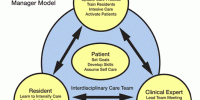Attention-deficit/hyperactivity disorder (ADHD) is not limited to humans; it may also be a problem in our dogs. According to a new study, dogs can develop a behavioral condition similar to ADHD in humans. Gender, age, the dog’s breed, and even how much attention their owner gives them all have a part in whether they develop this illness, according to a study from the University of Helsinki.
A study involving 11,000 dogs found that the dog’s gender, age, and breed, as well as any behavioral issues and specific contextual conditions, are linked to hyperactive and impulsive behavior and inattention (ADHD).
“Our findings can assist to better diagnosing, explaining, and treating canine hyperactivity, impulsivity, and inattention. Furthermore, they shown resemblance to human ADHD, bolstering the significance of dogs in ADHD study “Professor Hannes Lohi, leader of a canine gene research lab at the University of Helsinki, agrees.
“Dogs and humans have numerous similarities, including physiological features and the same environment. Furthermore, ADHD-like behavior is common in dogs. This makes canines an intriguing model for studying ADHD in humans” Sini Sulkama, a Ph.D. researcher, explains.
Dogs and humans have numerous similarities, including physiological features and the same environment. Our findings can assist to better diagnose, explain, and treat canine hyperactivity, impulsivity, and inattention. Furthermore, they shown resemblance to human ADHD, bolstering the significance of dogs in ADHD study
Professor Hannes Lohi
According to a study published this month in the journal Translational Psychiatry, certain dogs exhibit characteristics that are similar to ADHD in humans. According to the authors, the study, which followed hyperactivity, impulsivity, and inattention in over 10,000 dogs, provides hope for better therapies for both species.
Professor Lohi’s research team collected data on over 11,000 canines through an intensive behavioral survey. Questions based on a survey used in human ADHD research were used to assess hyperactivity, impulsivity, and inattention. The study’s purpose was to investigate environmental factors driving canine ADHD-like behavior as well as possible linkages to other behavioral features.
The dog’s age and gender as well as the owner’s experience of dogs make a difference
“We discovered that juvenile dogs and male dogs were more prone to hyperactivity, impulsivity, and inattention. Corresponding observations about age and gender in relation to ADHD have also been made in humans “Jenni Puurunen, Ph.D., agrees.
Canines who spent more time alone at home alone each day were more energetic, impulsive, and inattentive than dogs who spent less time alone. “Dogs, as sociable creatures, can become frustrated and anxious when left alone, which manifests as hyperactivity, impulsivity, and inattention. It’s possible that dogs who spend more time alone get less exercise and attention from their owners” Sulkama ponders.
The researchers uncovered a novel link between hyperactivity and impulsivity and the owner’s experience with dogs since the two characteristics were more common in dogs that were not their owners’ first canines. The cause of this phenomenon is unknown.
“People may choose a less active individual as their first dog since it better matches the image of a pet dog, but more energetic and difficult canines can be picked after acquiring more experience with dogs,” Sulkama notes.

Significant differences between breeds
Breeding has had a substantial impact on breed-specific behavior in several dog breeds. Differences across breeds can also point to genes that underpin the relevant features.
“Breeds bred for labor, like the German Shepherd and Border Collie, are characterized by hyperactivity and impulsivity on the one hand, and excellent concentration on the other. In contrast, breeds popular as pets or show dogs, such as the Chihuahua, Long-Haired Collie, and Poodle, are said to benefit from a calmer temperament, making them easier companions in everyday life. However, the capacity to concentrate has not been regarded as significant quality in these breeds as it is in working breeds, which is why inattention is more widespread in domestic dogs “According to Professor Lohi.
Link to other behavioral problems
The study confirmed previously observed interesting links between hyperactivity, impulsivity and inattention, and obsessive-compulsive behavior, aggressiveness, and fearfulness. ADHD is also often associated with other mental disorders and illnesses. For example, obsessive-compulsive disorder (OCD) often occurs in conjunction with ADHD. In dogs, OCD-like obsessive-compulsive behavior can appear as, among other things, tail chasing, continuous licking of surfaces or themselves, or staring at ‘nothing’.
The findings verified previously documented intriguing relationships between hyperactivity, impulsivity, and inattention, as well as obsessive-compulsive behavior, aggression, and fearfulness. ADHD is frequently linked to other mental conditions and illnesses. Obsessive-compulsive disorder (OCD), for example, is frequently associated with ADHD. OCD-like obsessive-compulsive behavior in dogs can manifest as tail chasing, constant licking of surfaces or themselves, or looking at ‘nothing.’
















